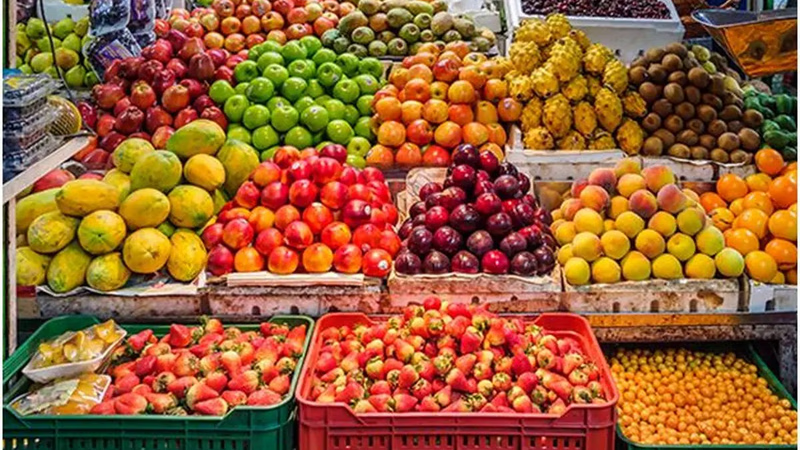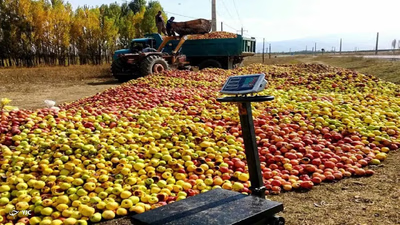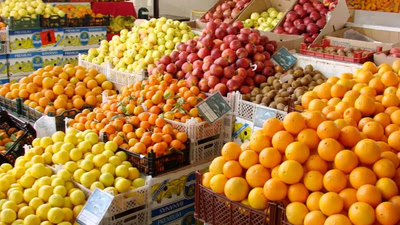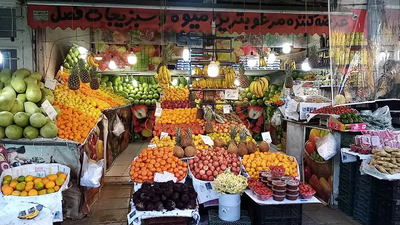
Fruits symbolize health and happiness in Middle Eastern culture.
Fruit plays an important role in the culture and religion of the Middle East and West Asia . These regions have a very rich history and culture, and consumption of fruits is important in daily life and religious and cultural events. In general, fruit is important in the culture and religion of the Middle East and West Asia as a part of daily life and religious and cultural ceremonies. They are not only a source of nutrition and health, but also symbols of happiness, blessing and beauty. Of course, it should be noted that the role of fruit in the culture and religion of different regions may be different and in each culture and region there may be certain symbols and beliefs.
- Fruits in nutrition : The consumption of fruits is very common in the daily diet of the people of the Middle East and West Asia. Fruits are a rich source of vitamins, minerals and fiber and are known as an important part of the diet of the people of these regions.
- Fruit in traditional medicine : In Middle East and West Asian cultures, many fruits are used in traditional medicine. It is believed that the consumption of some fruits can help to improve and cure some diseases. For example, in some cultures, pomegranate is known as a symbol of happiness and health, and in traditional medicine, it is attributed healing properties for some diseases.
- Fruits in religious and cultural occasions : In some religious and cultural ceremonies in the Middle East and West Asia, fruits play an important role. For example, in the Nowruz (Nowruz) festival celebrated in many countries of this region, certain fruits such as apples, grapes and peaches are used as important symbols. Also, in wedding ceremonies and other special celebrations, fruits are used as symbols of wealth and blessing.
- Fruit in art and literature : Fruits play an important role in the art and literature of these regions. They are used as symbols of beauty and delicacy in poetry, painting and other works of art.
Yes, of course, it should be noted that the healing properties of fruits in the traditional medicine of the Middle East and West Asia are based on traditional beliefs and experiences and require more detailed scientific research.
- Pomegranate : Pomegranate is known as a symbol of happiness and health in some cultures, and in traditional medicine, it is attributed many healing properties. For example, pomegranate may be used as an anti-inflammatory, antibacterial, stomach antacid, blood pressure regulator, and heart disease prevention.
- Dates : Dates are known as a tonic and nutritious fruit in the Middle East and West Asia. Dates are a rich source of energy, fiber, vitamins, minerals and antioxidants. In traditional medicine, dates may be used to improve digestion, strengthen the immune system, relieve stomach pains, and eliminate iron deficiency.
- Tangerine : Tangerine is a very popular fruit that is cultivated in the Middle East and West Asia. This fruit contains high vitamin C and strong antioxidants. In traditional medicine, tangerines may be used to boost the immune system, relieve coughs and colds, improve digestive function, and maintain heart health.
- Mango : Mango is a famous fruit in tropical regions, and in traditional medicine of the Middle East and West Asia, many healing properties are attributed to it. This fruit contains large amounts of vitamins A, C and fiber. Mangoes may be used to boost immunity, improve skin health, bone structure, and blood sugar control.
- Barberry : Barberry is a valuable fruit in these regions, which has many healing properties in traditional medicine.
In Middle Eastern culture, fruit is known as a symbol of life, happiness, deliciousness and blessing. From a religious and cultural perspective, fruit is often considered a divine blessing and is used as a symbol of abundance and blessing in life. In some myths and stories, the fruit is also a symbol of love and eternal life. Typically, fruits such as pomegranates, dates, cucumbers, grapes, watermelons, and oranges are used to represent these symbols.
-

Saudi Arabia, the largest economy in the Middle East, heavily relies on fruit imports due to its arid climate and limited agricultural capacity. The UAE, particularly Dubai, acts as a significant trade hub for fruit imports and re-exports, driven by a large expatriate population and a thriving hospitality sector. Iran, despite being a major fruit producer, also imports to meet diverse consumer demands throughout the year. Iraq faces challenges in its agricultural sector due to past conflicts, leading to substantial reliance on imported fruits. Kuwait"s high per capita income and consumer preferences necessitate significant fruit imports as well. Turkey stands out as both a major importer and exporter of fruits in the region, with a diverse climate supporting various crops. Israel has made strides in agricultural technology, exporting high-quality fruits globally. The Middle East fruit market is influenced by climatic conditions, trade policies, and regional economic factors.
Countries like Egypt and Jordan also contribute to the regional fruit trade through exports of locally cultivated varieties. "
-

West Asia"s fruit market is influenced by various factors including climate, agricultural practices, and government policies. Favorable climates and modern farming techniques enhance fruit production, while trade regulations shape the import-export landscape. Consumer preferences significantly impact demand, with trends towards organic and exotic fruits emerging. Climate change poses challenges such as water scarcity and extreme weather, affecting crop yields. Local production levels determine reliance on imports; countries with strong domestic output can become reliable exporters. Additionally, commercial policies like tariffs and financial incentives influence market dynamics. Technical standards ensure quality and safety in trade, while competition among nations drives innovation in pricing and product diversity. Efficient logistics are crucial for managing perishable goods, reducing losses during transport.
Economic factors such as GDP growth and income levels also play a role in consumption patterns. Political stability is essential for maintaining trade flows, as conflicts can disrupt supply chains. Participation in international trade agreements enhances market access and competitiveness for West Asian countries. "
-

In West Asia, the demand for fruit is significantly influenced by the region"s warm climate and cultural preferences for fresh produce. Key fruits produced include dates, figs, pomegranates, and citrus varieties like oranges and lemons. However, limited arable land and water resources often result in supply shortages, leading to increased imports, especially in Gulf countries with higher purchasing power. The rising interest in organic and locally grown fruits presents opportunities for small-scale farmers to cater to this demand. While countries like Iran, Turkey, Egypt, Syria, Saudi Arabia, and the UAE are notable producers of various fruits, others such as Saudi Arabia and Qatar heavily rely on imports to meet their needs. The diversity in fruit supply and demand across West Asia is shaped by local climatic conditions and agricultural capabilities. Advanced agricultural technologies in regions like Israel allow for the production of fruits under challenging conditions. Political stability also plays a crucial role; conflicts can disrupt production and distribution channels, affecting supply and pricing.
Conversely, stable nations like the UAE exhibit high demand for luxury fruits as major importers. Additionally, urbanization and a growing population further drive the need for fresh produce in the region. Overall, the fruit market in West Asia is dynamic and complex, reflecting both challenges and opportunities. "
-

Fruit is integral to the culture and religion of the Middle East and West Asia, serving as a vital part of daily life and various ceremonies. It symbolizes happiness, beauty, and blessings while providing essential nutrition. Fruits like pomegranates, dates, tangerines, mangoes, and barberries are not only dietary staples but also hold significant roles in traditional medicine. For instance, pomegranates are revered for their healing properties and are associated with health and joy. Cultural events such as Nowruz highlight the importance of fruits as symbols of wealth during weddings and celebrations. Additionally, fruits inspire art and literature in these regions, representing beauty in various forms. The diverse uses of fruit reflect deep-rooted beliefs that intertwine health benefits with cultural significance.




